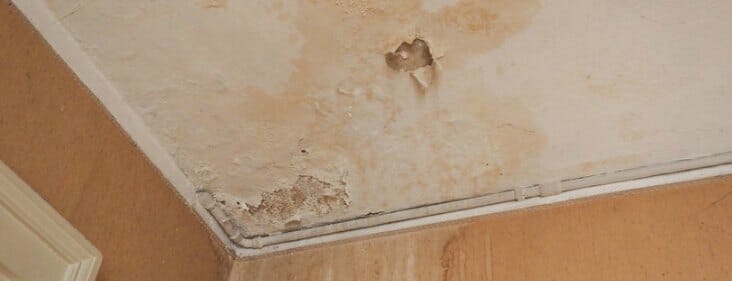What are your beliefs on Common Water Leaks In House?

Leakages not only create waste of water yet can also create unnecessary damages to your house and advertise unwanted natural development. By looking as well as understanding for day-to-day circumstances that create leakages, you can safeguard your residence from future leaks as well as unnecessary damages.
Trespassing roots
The majority of water leaks start outside the house as opposed to inside it. If you discover an abrupt reduction in water pressure, state in your faucet, take some time to head out as well as examine your backyard. You may see wet patches or sinkholes in your backyard, and that could indicate that tree roots are attacking water lines triggering water to leak out. You can have your plumber check for invasion, especially if you have trees or hedges near your property.
Corroded water systems
As time passes by, your plumbing system ages as well as deterioration such as rust may begin gnawing the pipes. This could be the reason for staining or bending on your water pipes. This requires an examination with your plumber right away. If our plumbing system is old, consider changing the pipes considering that they are at a greater risk of rust than the more recent models.
Defective Pipe Joints
The factor at which your pipelines connect is often the weakest web link in the waterline. Pipe joints can weaken over time, leading to water leakages. The bulk of pipe joints are not easily visible. If you have loud pipelines that make ticking or banging sounds, specifically when the warm water is switched on, your pipeline joints are possibly under a great deal of stress. It is recommended to have your plumber check your system annually.
Instant temperature changes.
Severe temperature level changes in our pipes can trigger them to expand and acquire unexpectedly. This expansion and contraction may trigger cracks in the pipelines, especially if the temperature are below cold.
Poor Water Connectors
At times, a leak can be triggered by loosened hose pipes as well as pipelines that supply your devices. In case of a water links leak, you might notice water running directly from the supply line or puddles around your devices.
Clogged Drains
Obstructed drains may be bothersome as well as inconveniencing, yet they can in some cases wind up causing an overflow causing burst pipes. Maintain removing any products that may decrease your drains pipes that might block them to stay clear of such inconveniences.
All the above are sources of leaks however not all water leaks arise from plumbing leaks; some leaks might come from roof covering leakages. All leaks need to be repaired immediately to avoid water damages.
Leaks not just create waste of water but can likewise trigger unneeded damage to your home and also advertise undesirable organic development. By looking and comprehending for everyday situations that trigger leaks, you can shield your residence from future leakages and also unnecessary damages. Today, we will certainly look at six leak causes that might be creating your pipelines to drip.
At times, a leak can be created by loose pipes as well as pipes that supply your devices. In case of a water connections leakage, you might observe water running directly from the supply line or pools around your devices.
How To Check For Water Leak In Your Home
How To Check for Leaks
The average household's leaks can account for nearly 10,000 gallons of water wasted every year and ten percent of homes have leaks that waste 90 gallons or more per day. Common types of leaks found in the home are worn toilet flappers, dripping faucets, and other leaking valves. These types of leaks are often easy to fix, requiring only a few tools and hardware that can pay for themselves in water savings. Fixing easily corrected household water leaks can save homeowners about 10 percent on their water bills.
To check for leaks in your home, you first need to determine whether you're wasting water and then identify the source of the leak. Here are some tips for finding leaks:
Take a look at your water usage during a colder month, such as January or February. If a family of four exceeds 12,000 gallons per month, there are serious leaks.
Check your water meter before and after a two-hour period when no water is being used. If the meter changes at all, you probably have a leak.
Identify toilet leaks by placing a drop of food coloring in the toilet tank. If any color shows up in the bowl after 10 minutes, you have a leak. (Be sure to flush immediately after the experiment to avoid staining the tank.)
Examine faucet gaskets and pipe fittings for any water on the outside of the pipe to check for surface leaks.
Undetected water leaks can happen without the home or business owner even realizing. If you suspect a water leak, but not able to find the source. It is time to contact a professional water leak detection service, The Leak Doctor.
How To Find a Water Leak In Your Home
https://www.leakdoctor.com/blog/How-To-Check-For-Water-Leak-In-Your-Home_AE197.html

I ran across that article on How to detect water leaks in your home while doing a search on the web. Appreciated our blog? Please share it. Let someone else check it out. I value reading our article about Common Water Leaks In House.
Contact Us